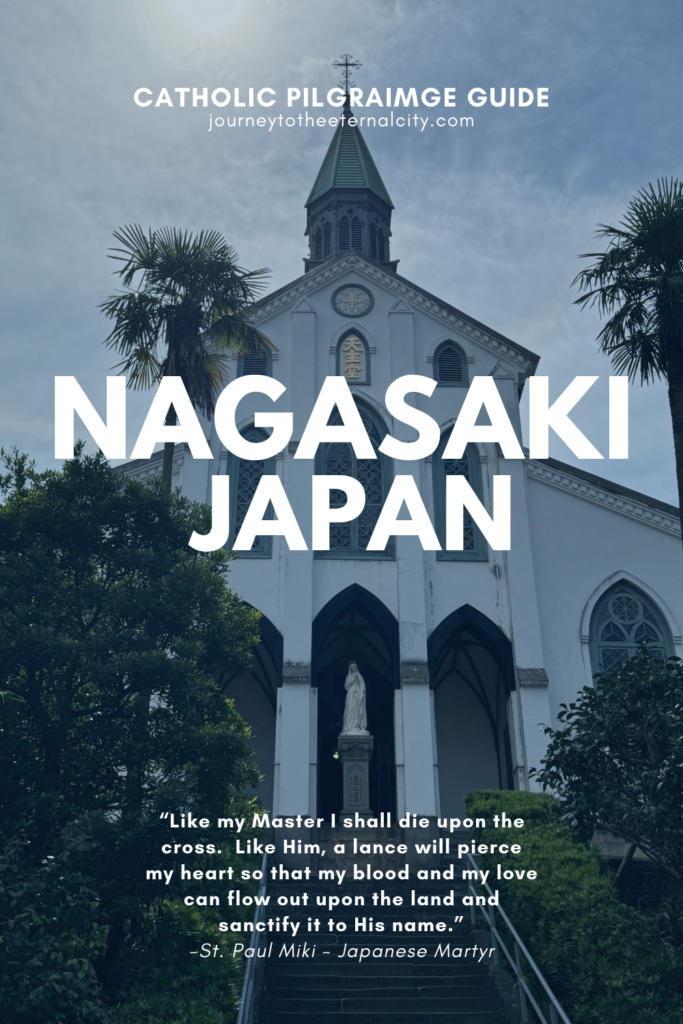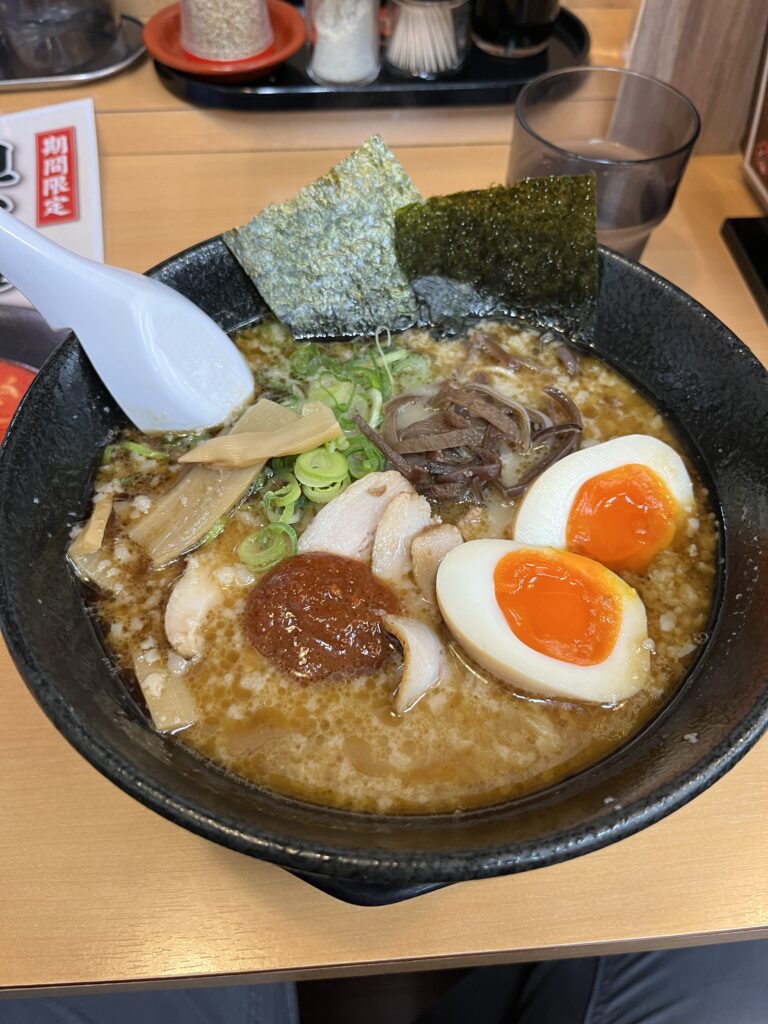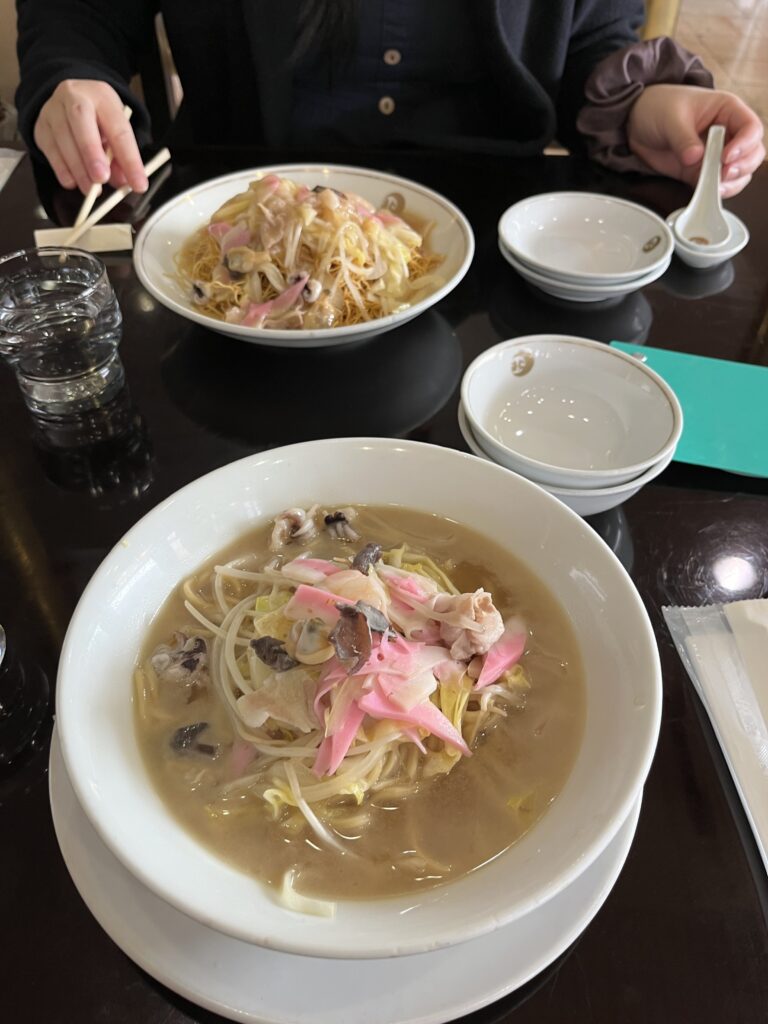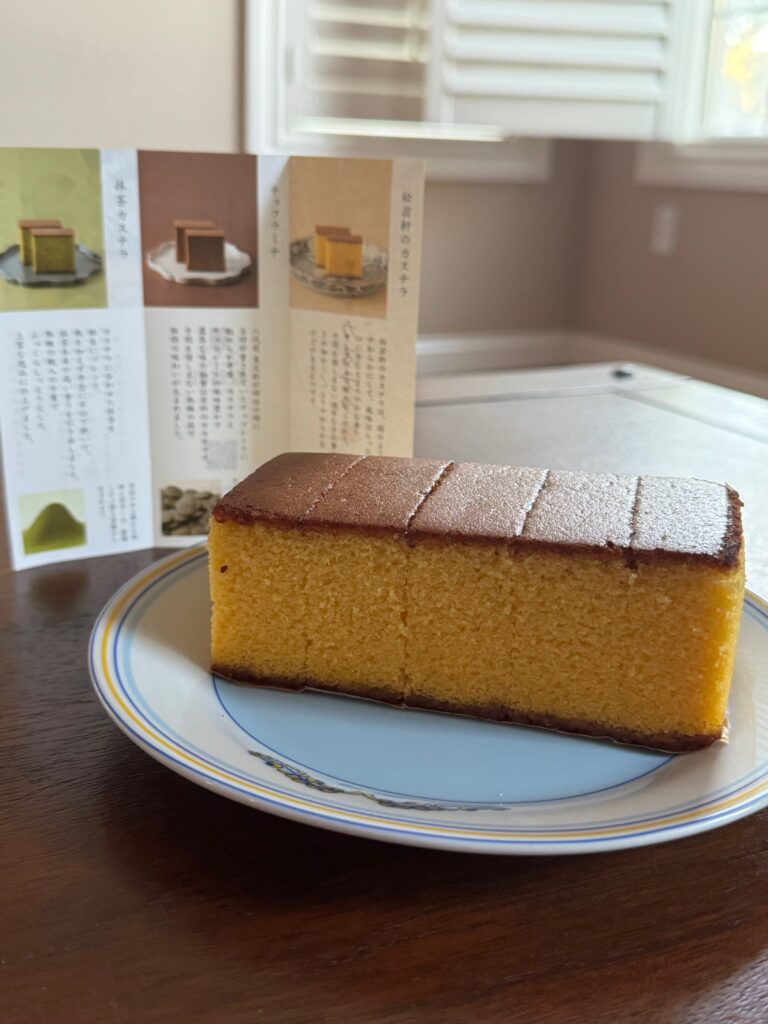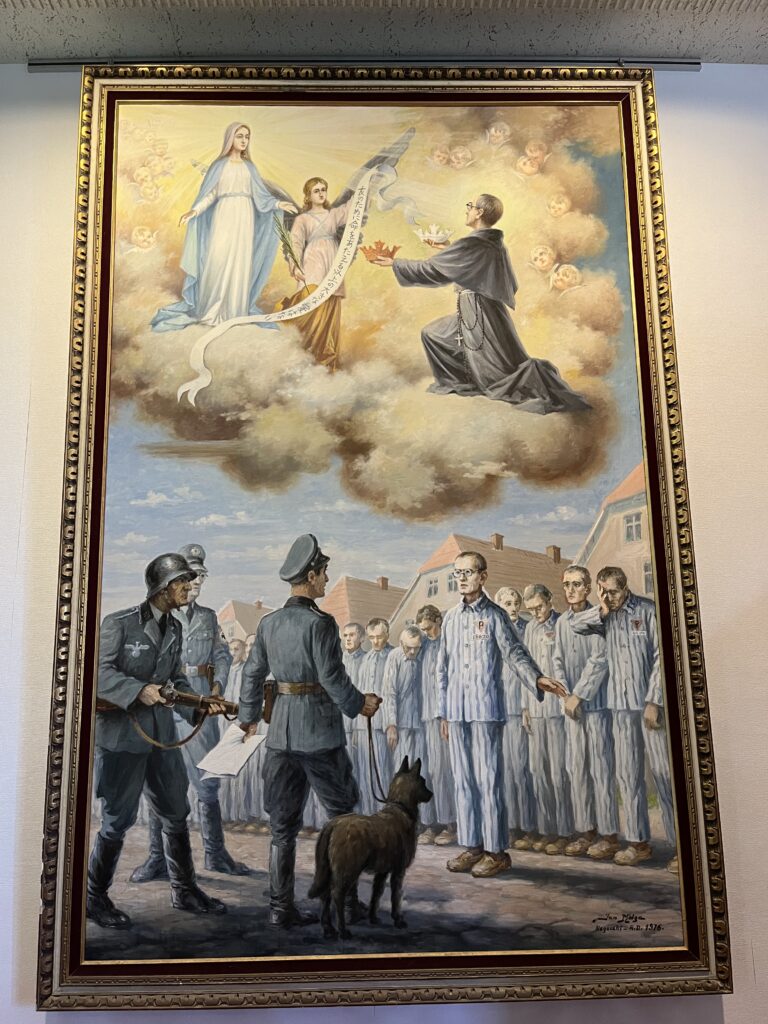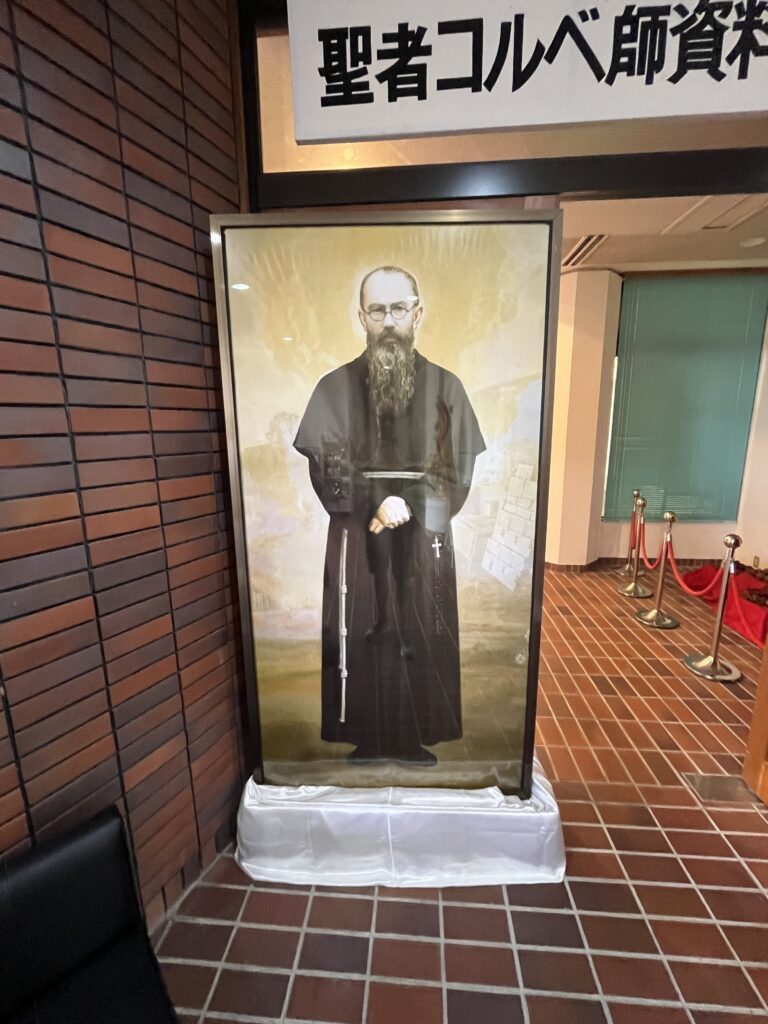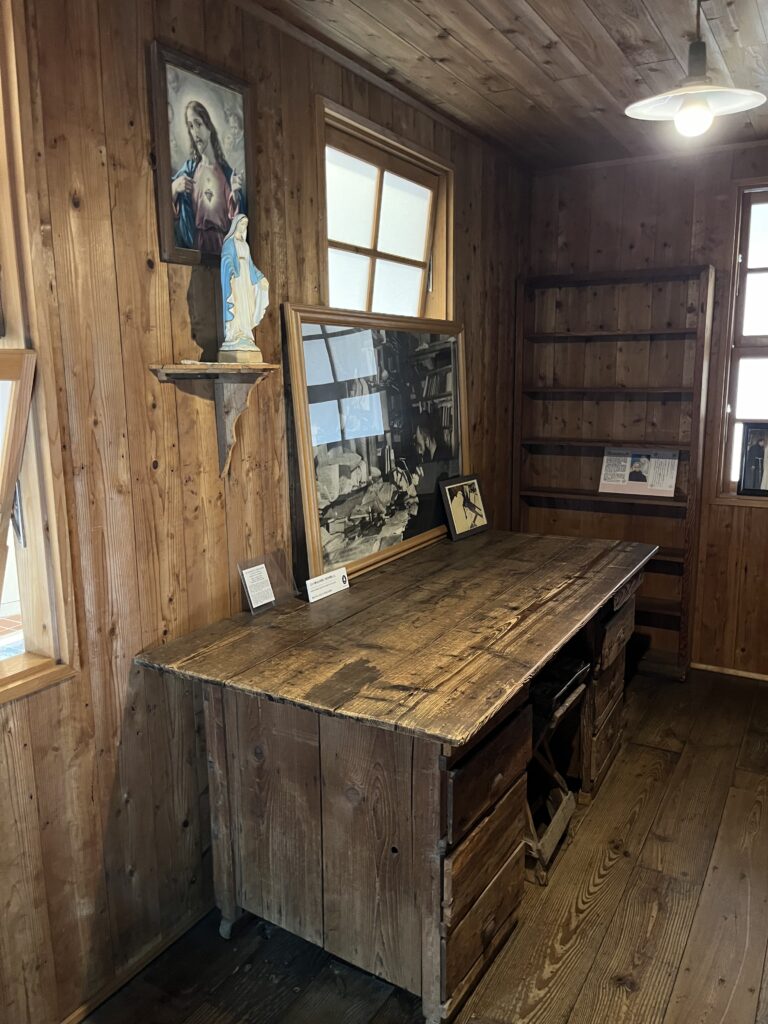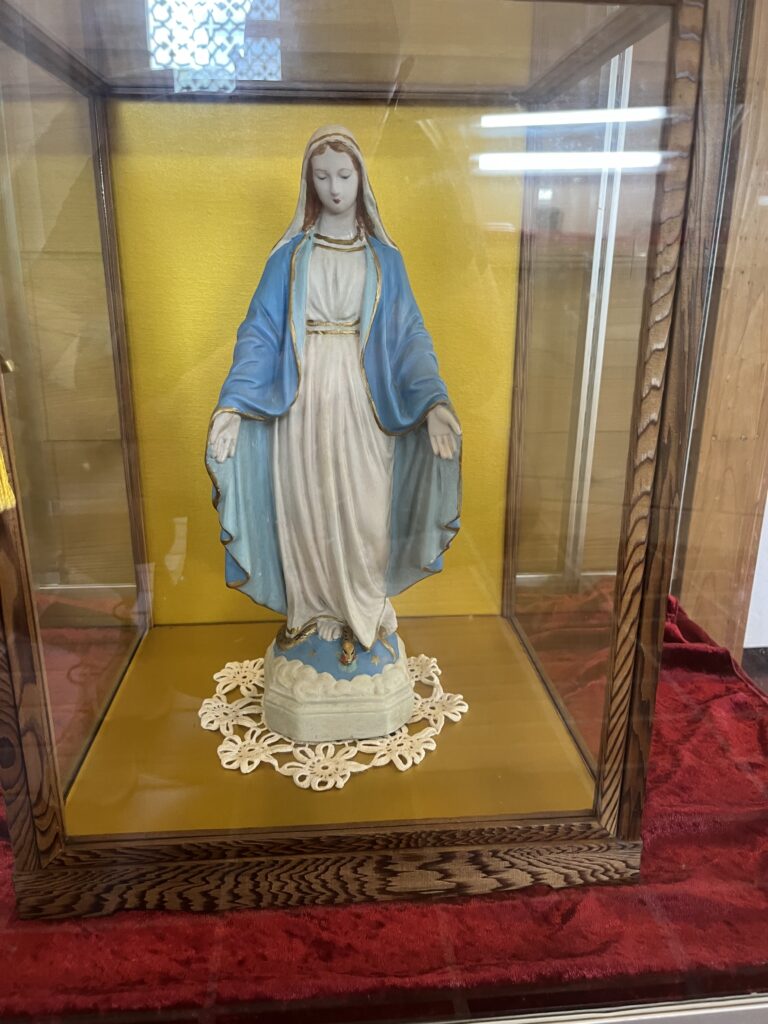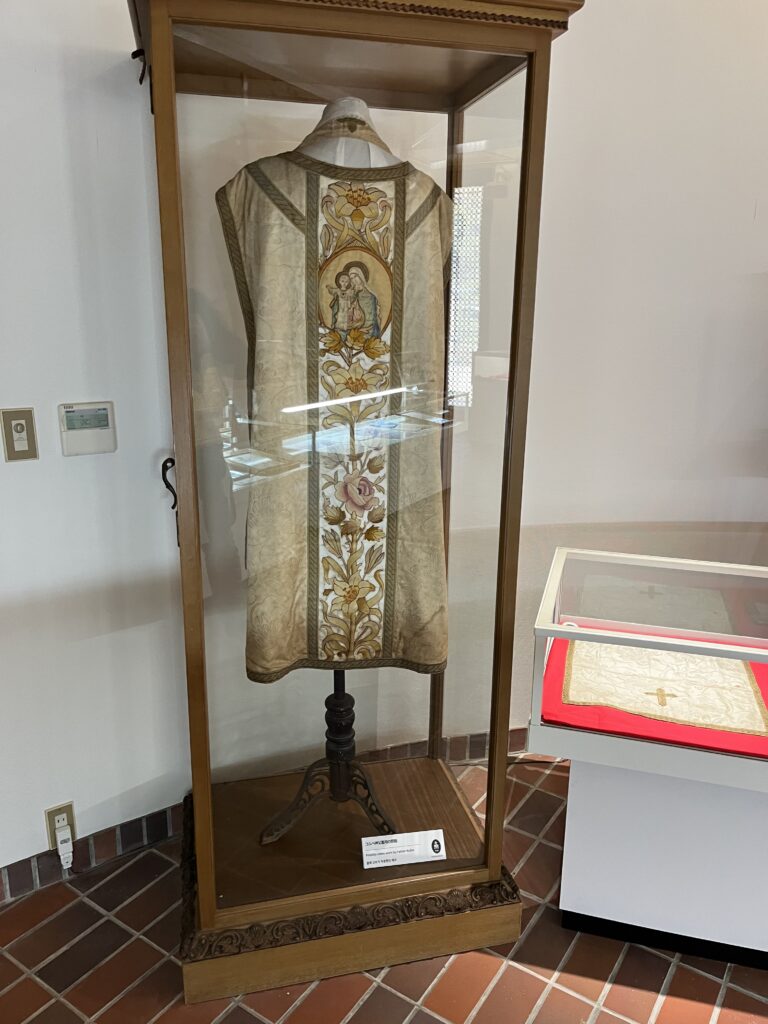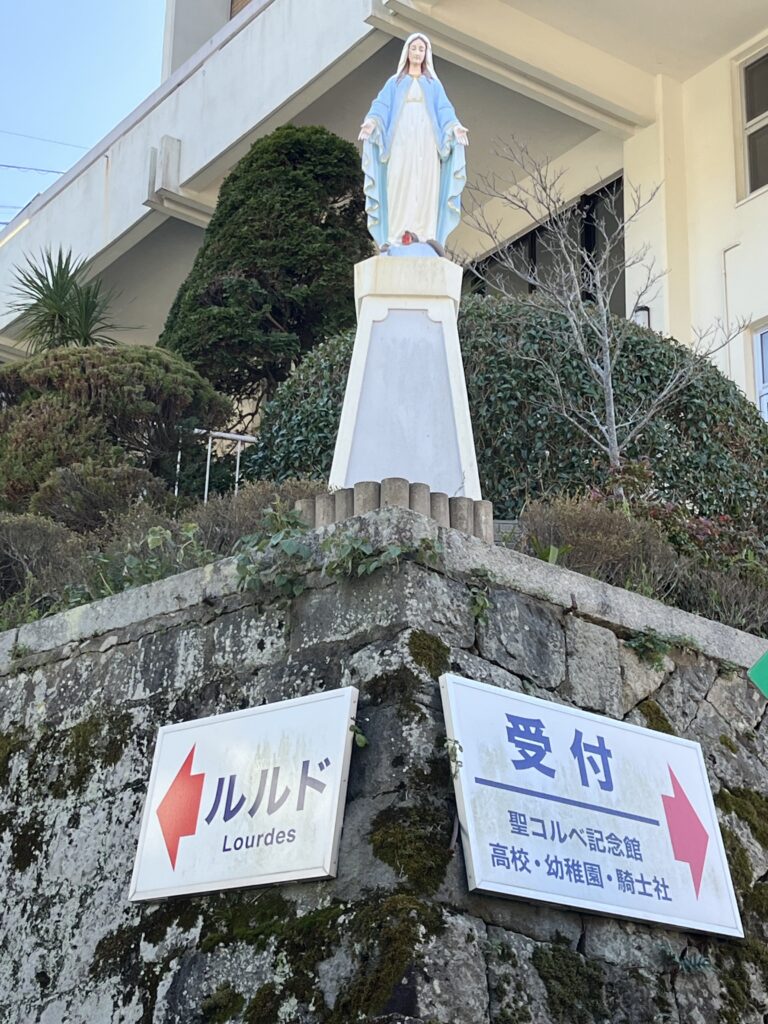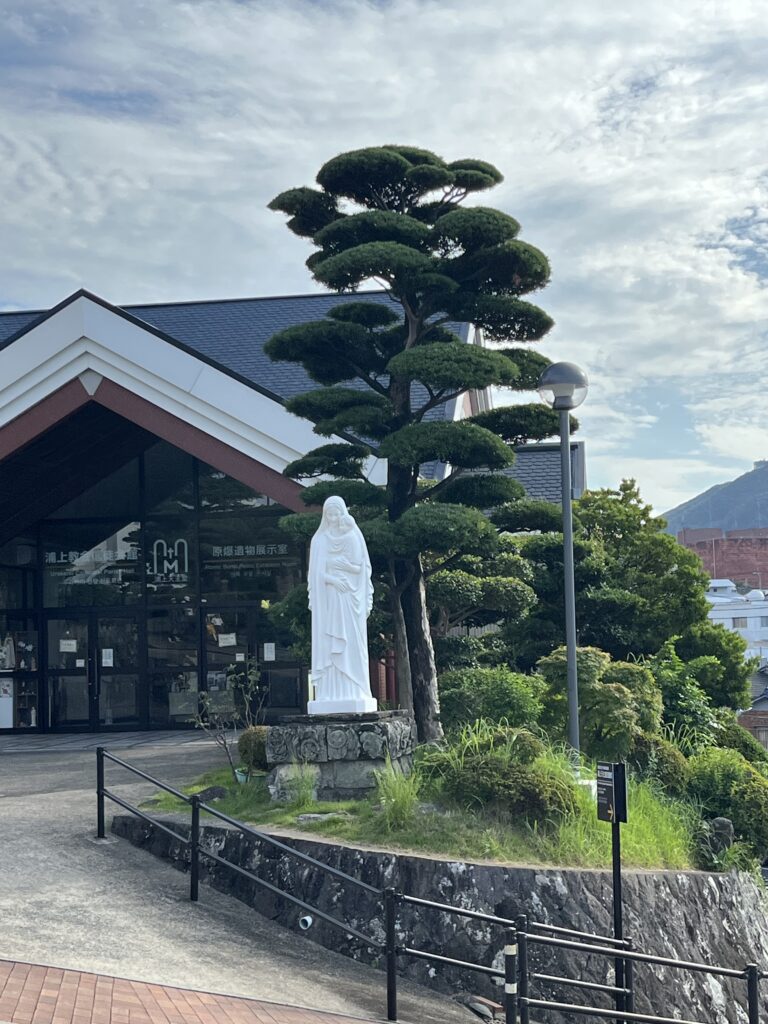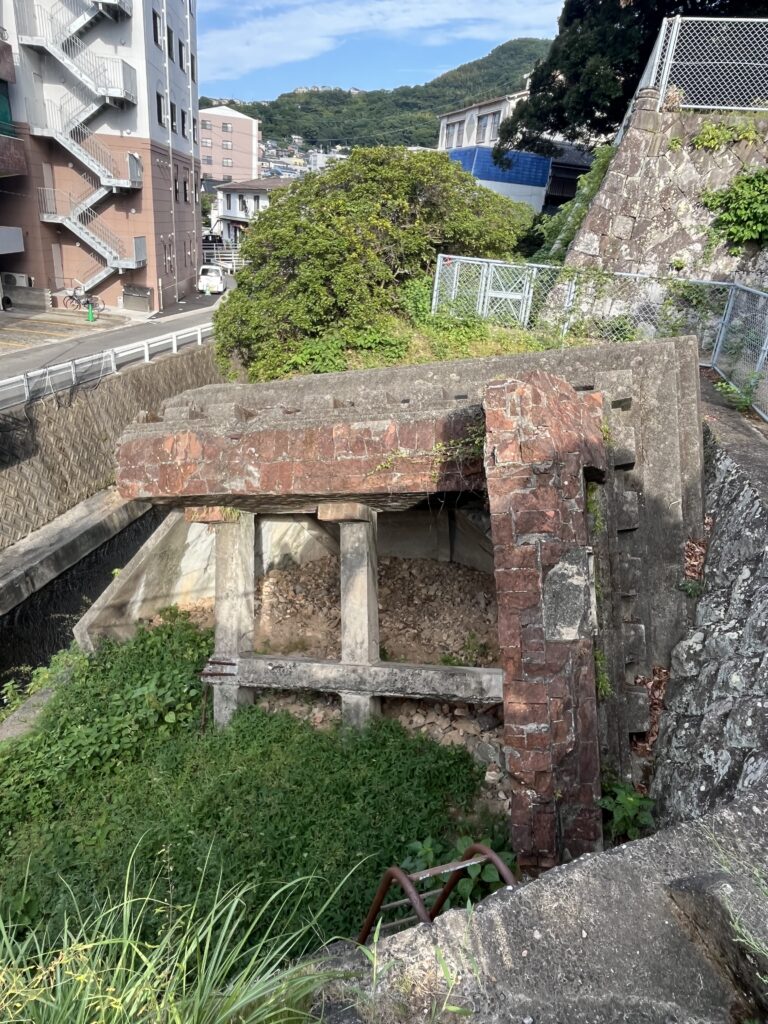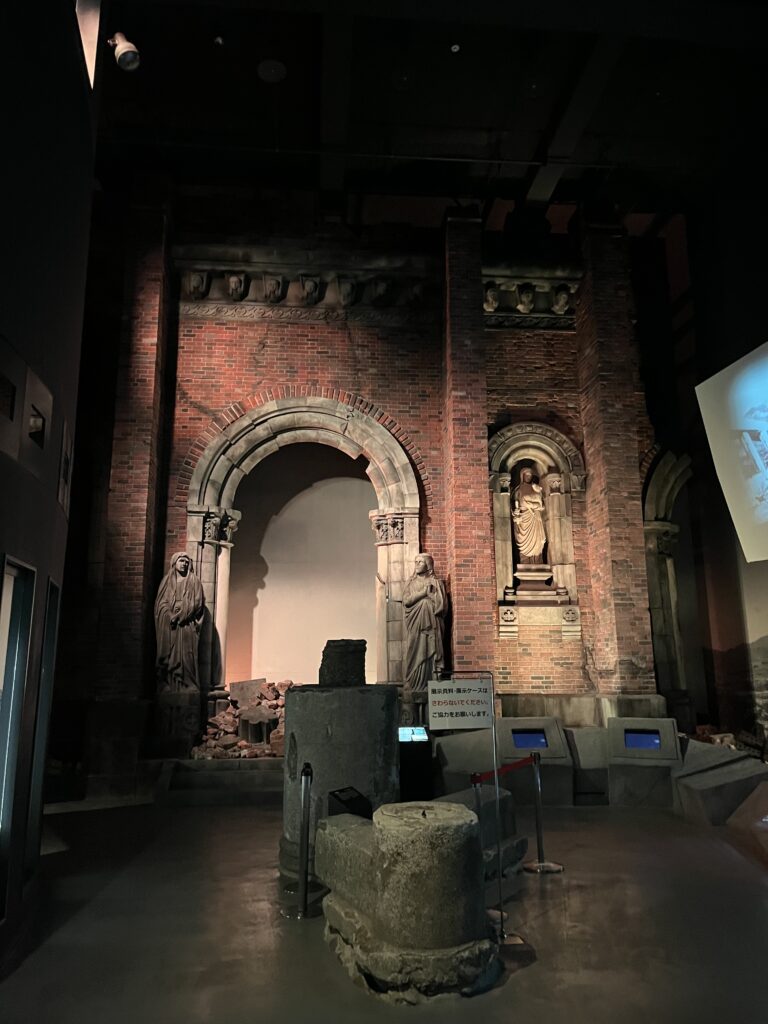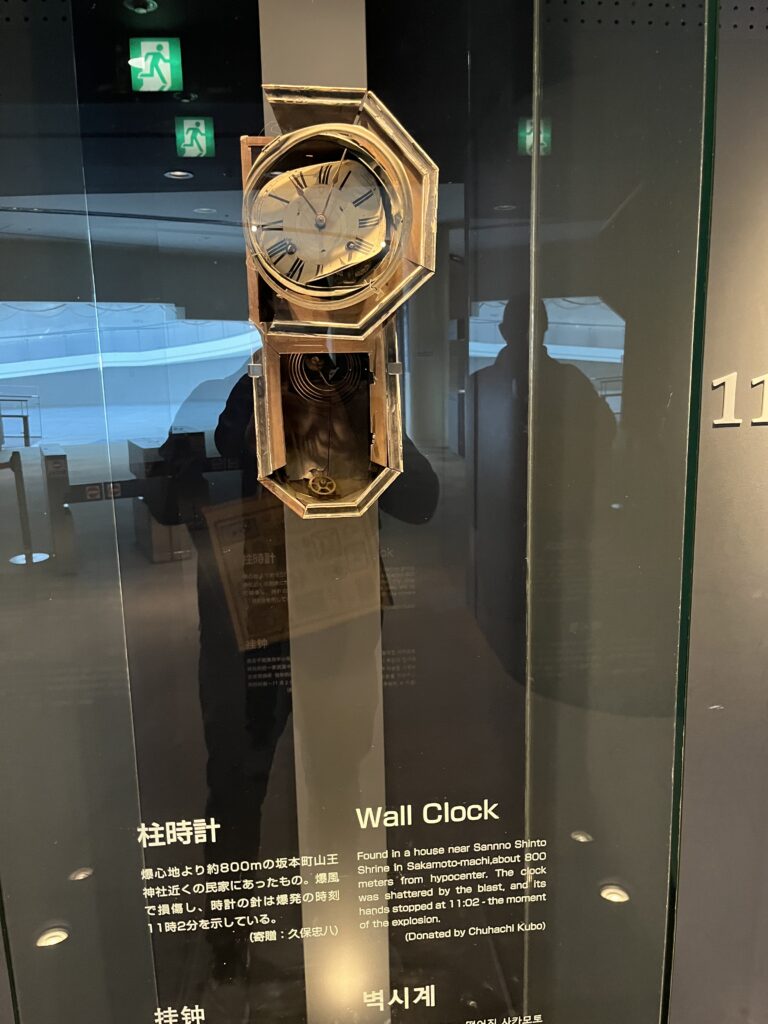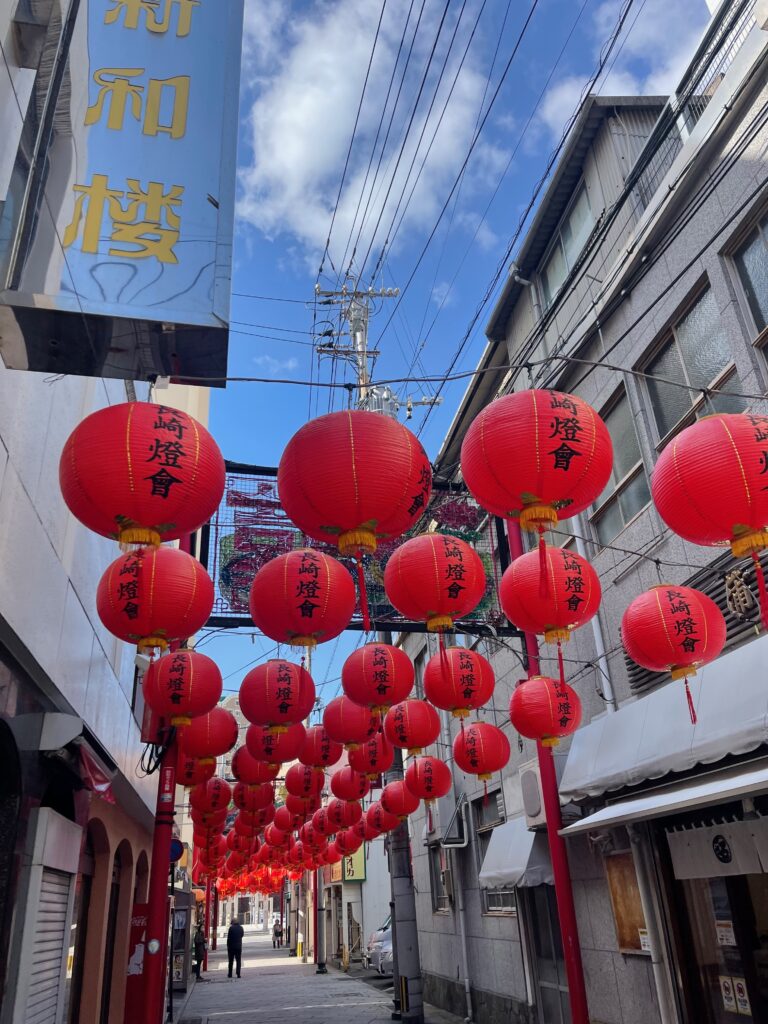A Helpful Guide to Plan Your Pilgrimage to Nagasaki
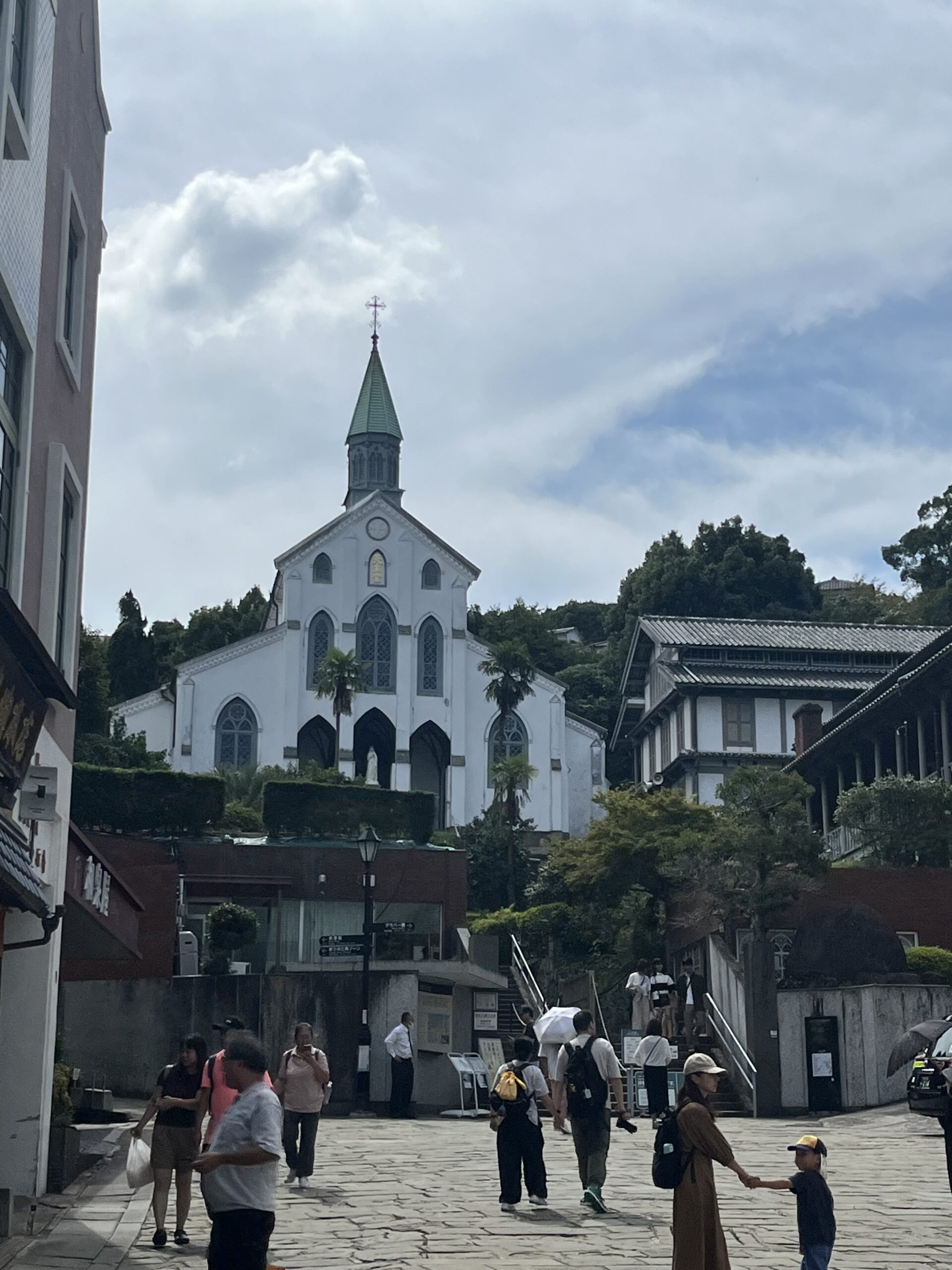
We’ve compiled an article with everything you need to know to plan your Catholic pilgrimage to Nagasaki, Japan.
Tragically known for its World War II history, there is another side to Nagasaki’s rich history that is of interest to all Catholics. Nagasaki is where Christianity first arrived in Japan 450 years ago, and where it flourished even to the point of being nicknamed Little Rome. Today, you can still see the influence of Catholicism on Nagasaki with traces of it sprinkled throughout the city.
It was in this city where Catholics were the most persecuted in the country and where after seven generations of hiding and persecutions, the hidden Christians revealed that they had miraculously held onto their faith. It is well worth coming here at least once in your life on a pilgrimage. In doing so, you will follow in the footsteps of St. John Paul II, Mother Theresa, and Pope Francis, to venerate the martyrs of Japan and admire the heroism of the hidden Christians.
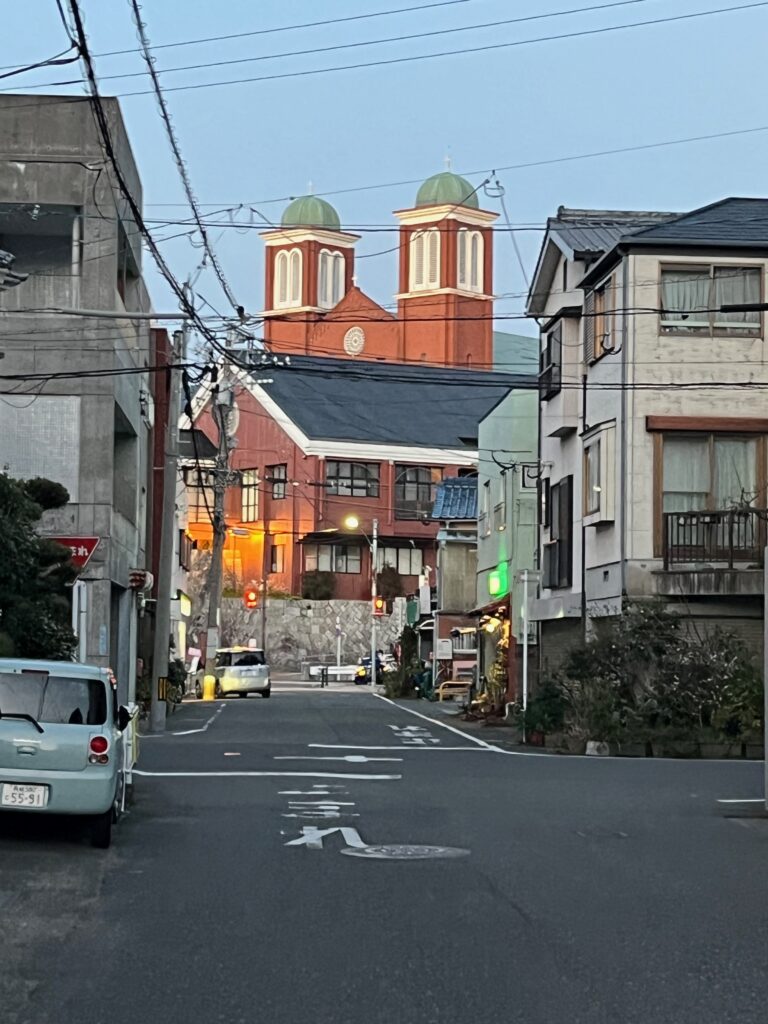
How to get to Nagasaki?
- You can fly into Nagasaki airport, which is 25 miles from the city. The best way to get from the airport to Nagasaki proper is by bus. The bus takes about 50 min to get from the airport to the Nagasaki JR train station. A one-way ride will cost you about 1200 yen.
- You can also fly into Fukuoka airport. To get to Nagasaki rent a car (under two hours) or take a bus (over 2 hours).
- If you are coming from Tokyo or Kyoto by Shinkansen, change at Hakata station in Fukuoka to the Nishikyushu Shinkansen or the JR Kamome Limited Express to Nagasaki Station.
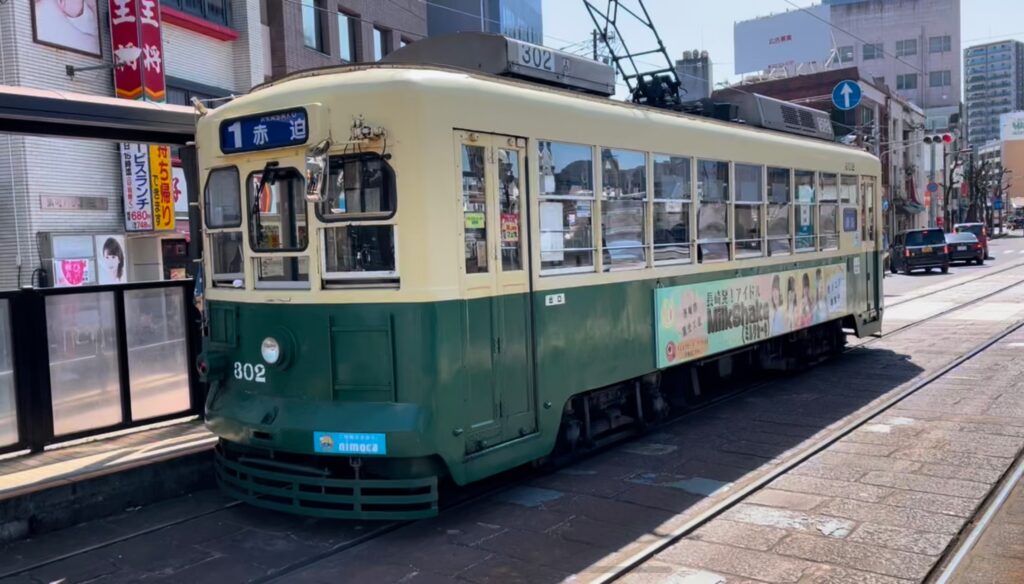
- Once inside Nagasaki, you can use the very convenient tram to get to all the tourist spots. Don’t bother using your rental car if you have one as it can be hard to find parking. Nagasaki has four tram lines which run every 5 to 8 minutes from 6:00 am to 11:00 pm. Google maps is a great app to use to navigate Nagasaki by tram.
- Customarily, people enter in through the rear door of the tram and exit through the front door. You will pay the driver when exiting if using cash. But if you are using an IC card, make sure to scan the card on your way in and out. One ride costs 140 yen per ride regardless of the distance or how far you travel.
Pro Tip: Before you fly to Japan, download either PASMO or Suica IC card to your phone wallet. It will make it very convenient when using the JR train, subway, bus or tram throughout Japan. You just can’t use it on the Shinkansen.
Lodging Suggestions
We recommend you stay in Nagasaki at least two nights to see everything. For an affordable hotel, we recommend Hotel Forza Nagasaki. We stayed there during our first stay in Nagasaki. It was comfortable and ideally located downtown, close to some of the best food options. Our favorite amenity was the foot massager in the room which felt amazing after walking all day.
During our second stay in Nagasaki, we stayed at the Hilton Nagasaki Hotel, next to Nagasaki JR Station. It was very comfortable and in a good location to easily catch the tram. From the hotel we could see the 26 Martyrs monument and a nice view of the city.
Food Recommendations
 A delicious bowl of Ramen from Hiiragi Ramen
A delicious bowl of Ramen from Hiiragi Ramen Champon Noodles from Nagasaki Chinatown
Champon Noodles from Nagasaki Chinatown Castella: one of the best desserts in Japan
Castella: one of the best desserts in Japan
If you remember one thing, do not leave Nagasaki without trying the Kakuni Manju pork belly bun, and the Castella cake. You can read more about our love for the castella cake here.
Food options are plentiful, but you cannot go wrong with going to Ramen Hiiragi, the most delicious ramen in the city. This restaurant recommended by a local, is one of our favorite ramen shops in Japan. Another good option is going to one of the little restaurants inside the Nagasaki JR Station. We recommend Nagasaki Seafood Bowl UOMARU ASA. You can also find places to eat around Hamamachi, a shopping district with lots of boutiques, department stores, and restaurants.
We got our favorite pork belly bun from Iwasaki Honpo Hamamachi-Kankodori, which is right across the street from Ramen Hiiragi.
There is also a small sweet potato dessert shop right by the Peace Park tram stop. The lady working there was very sweet. We recommend you try their Sweet Potato Mont Blanc dessert.
Best Time to Visit Nagasaki
The weather is ideal in the Spring (March – May) or in the Fall (October-November). We went in March and the weather was very pleasant. The summer months are known to be hot and humid. The second time we went to Nagasaki was in September, and it was still very hot.
Where to go?
Oura Cathedral – Basilica of the Twenty-Six Holy Martyrs of Japan
- March to October – 8:30 am to 6:30 pm
- November to February – 8:30 am to 5:30 pm
- Admission fee: 1000 yen/person (cash)
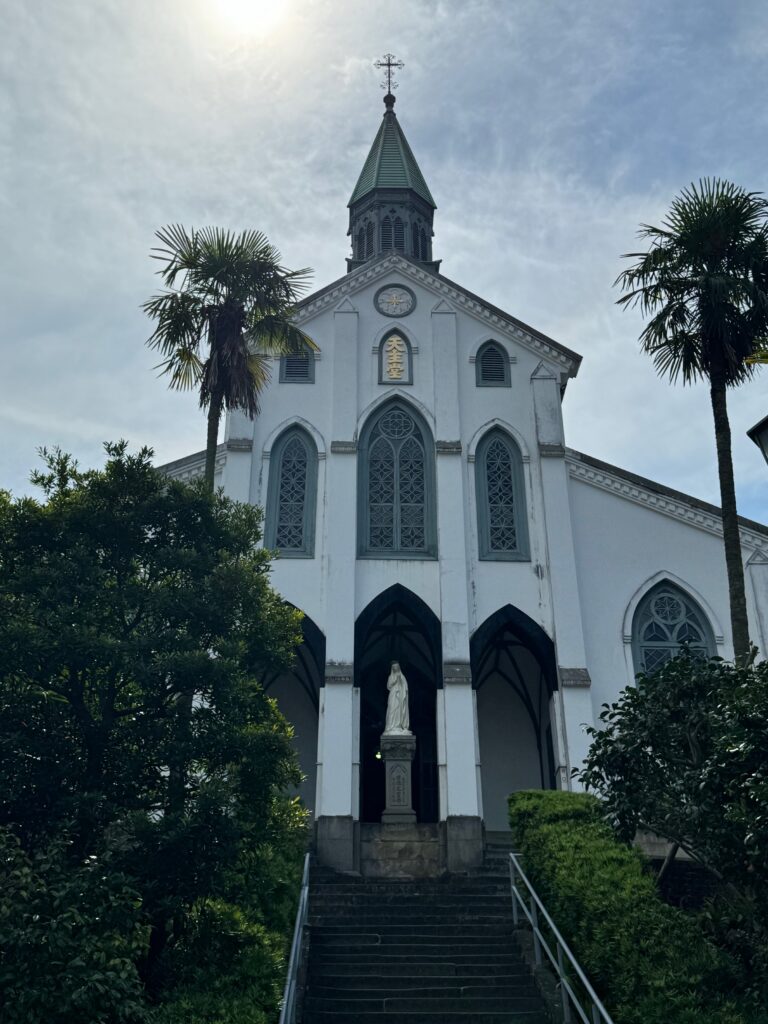
A great place to go to first after arriving in Nagasaki is the Oura Cathedral. It is very accessible if you take the number 5 green line tram (Ishibashi – Hotarujaya). Get off at the Oura Cathedral tram stop (Ouratenshudo) and walk 5 min down Glover Street. The street takes a left turn at Crowne Plaza – ANA Nagasaki Glover Hill.
As you walk up the hill to the Cathedral, you will notice a few shops offering free samples of Castella cake and Castella pudding. It is one of the best foods in Nagasaki, and dare I say one of the best desserts in Japan. Our favorite castella and ice cream tea shop is also just next door to the church. Go to this link for our in-depth review of all things Castella.
Oura Cathedral
The Oura church is both a minor basilica and a co-cathedral built after Japan’s isolation ended and named in honor of the 26 Martyrs of Japan. It is remarkable for being the oldest Christian church in Japan. It is also where the first of tens of thousands of underground Christians came out of hiding and revealed their faith to Fr. Bernard Petitjean of the Society of Foreign Missions of Paris (MEP).
The interior of the church is breathaking, with it’s beautiful woodwork and stained glass. Take your time inside the church to admire the beautiful statues of Our Lady of Japan, Holy Mother and Child, the Sacred Heart, St. Joseph, and St. Francis Xavier. Also be sure also to look for “The Martyrdom of the Twenty-Six Saints” painting displayed above the tomb of Fr. Petitjean in the sanctuary.
History of Oura Cathedral and the Miracle of the Orient
Following great persecutions, there were no priests in Japan for 219 years (since 1644). Yet, Nagasaki Christians followed their catholic teachings and passed them down for generations with only prayer and the sacrament of baptism to sustain them. Fr. Bernard Petitjean surprised the world when he discovered the descendants of the first Japanese Christians living in the area. You can read more about this incredible miracle in these two articles: https://www.catholiccompany.com/getfed/what-was-the-miracle-of-the-orient/?srsltid=AfmBOoplvbrTHLLNSf3I7MHw0sQEjYKSj88ccjO-VbnrikHrC2fQaUUB or this link: https://www.catholicculture.org/culture/library/view.cfm?id=11717
Museum in the old Seminary
The admission fee also includes access to the museum of the history of Christianity in Japan in the old seminary building. The price might seem a little expensive, but it is well worth paying up. There you will learn about the history of Christianity from when St. Francis Xavier arrived in Japan, through the Tokugawa persecutions, to the two and half century isolation, and even to the persecutions after the hidden Christians revealed their faith.
St. Maximilien Kolbe’s First House in Japan

Between the shops on your right, you will also see a side street indicated by a large poster of St Maximilien Kolbe. Few people know that this great Saint, martyred in Auschwitz during the Second World War, spent six years of his life in Nagasaki. His first house is in that side street just under Oura Cathedral. Don’t miss out (we almost did) on going inside the small Oura St. Kolbe museum. The entrance fee is 100 yen. Once inside, you can go through the catholic store and to the back of the house where the fireplace is located. Before entering the room, you will have to take off your shoes. You can then press on the switch for an English audio description as you walk around the room and listen to St Maximilien Kolbe’s life in Japan.
Glover Garden
Around the corner from Oura Church, is the famous tourist sight: Glover Garden. If you find interest in the history of a Scottish merchant who contributed to the modernization of Japan, you can go visit his house (the oldest Western house in Japan), koi pond, and gardens. There is also a beautiful view overlooking Nagasaki harbor.
26 Martyrs Monument & Museum, St. Philip Nishizaka church
- The museum is open from 9:00 am to 5:00 pm.
- Admission fee: 500 yen/person
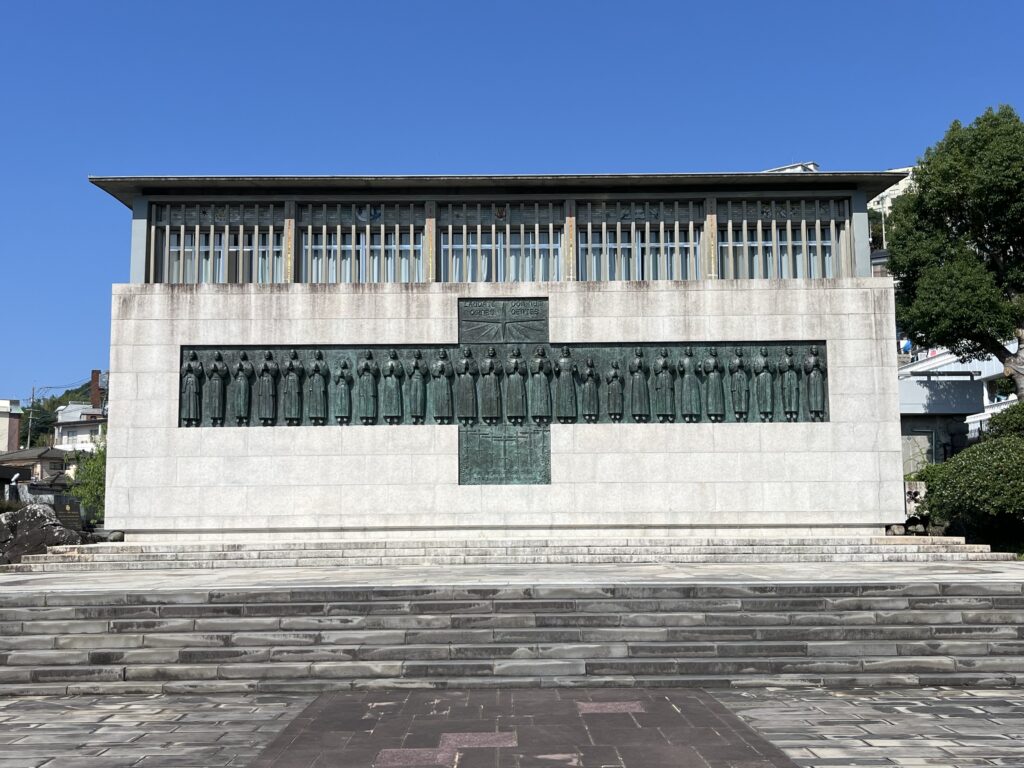
26 Martyrs Monument
Your next stop in Nagasaki ought to be Nishizaka hill, the location of some of the most moving stories of martyrdom. The most famous martyrs were the first group of 26 martyrs that included St Paul Miki, one of the first Japanese Saints. There is also another famous group of 16 martyrs that included the first Filipino Saint, St. Lorenzo Ruiz. These 42 martyrs join a staggering number of more than 600 martyrs executed on this hill throughout Nagasaki’s Christian history.
The Twenty Six Martyrs Monument and museum are a short and steep 10 min walk from Nagasaki JR Station.
History of the 26 Japanese Martyrs
On 5 February 1597, 20 Japanese Christians, including St. Paul Miki, and six foreign priests (Spanish, Mexican and Portuguese) were crucified following their arrest in Kyoto and Osaka for evangelizing the Japanese. After some time in prison, these Christians were publicly marched through the snow to Nagasaki, and crucified on Nishizaka hill in front of a crowd. Ultimately lanced to death, their execution was an example to the people of Nagasaki who were predominantly catholic. The main bronze monument depicts all Twenty-Six Martyrs where they died. If you look closely, you will notice two of the martyrs represented with their arms wide open. These are St. Paul Miki and St. Peter Baptist who preached on the cross until their death.
To learn more about St. Paul Miki click here: https://mycatholic.life/saints/saints-of-the-liturgical-year/february-6-saints-paul-miki-and-companions-martyrs/
To learn more about St. Lorenzo Ruiz click here: https://www.franciscanmedia.org/saint-of-the-day/saint-lorenzo-ruiz-and-companions/#google_vignette
26 Martyrs Museum
Just behind the monument is the 26 Martyrs Museum with a collection that includes relics of the martyrs, original letters from St. Francis Xavier, and Marian statues disguised as buddhist deities used by the hidden Christians. The displays arranged in different periods include the early Christian propagation period throughout Japan, the martyrdom period, and the underground and persecution period. All displays have English explanations.
You can also see example of fumi-e, the treading images used to sniff out the hidden Christians. For more than two centuries (1629 to 1857), the residents of Nagasaki were forced to publicly apostatize their faith and prove they were not Christians in a yearly ceremony involving stepping on bronze images of Our Lord or His Blessed Mother. To refuse meant torture and death.

St. Philip Nishizaka Catholic Church
Across the street is St. Philip Nishizaka church, named after St. Philip of Jesus, one of the 26 Martyrs and the first Mexican martyr ever. After finishing his theological studies in the Philippines, St. Philip of Jesus passed through Japan to return to Mexico to receive Holy Orders. He was seized and martyred as one of the 26 martyrs.
The church architecture is modern and not our favorite design. But if you appreciate the work of Antoni Gaudi, you will recognize the style of the spires reminiscent of the Sagrada Familia Basilica in Barcelona. Masses are in Japanese or English. We recommend you enter the church, if only to venerate the relics of the bones of St. Paul Miki, St. John Goto, and St. Jacob Kisai on the right side of the church. On the left side of the church there is a Spanish wooden cross. It dates back to the 16th or 17th century and is one of the oldest in Japan. To the right of the altar is a statue of St. Philip of Jesus, and to the left of the altar is a statue of Our Lady.
Hongochi Church and Lourdes grotto
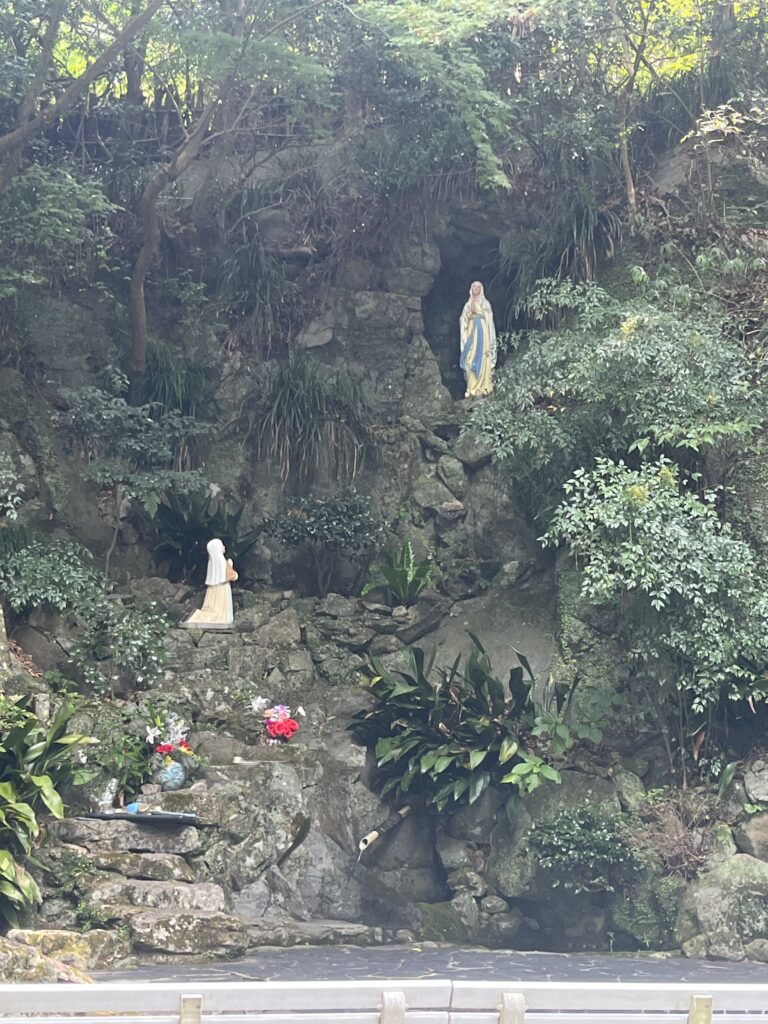
History of St. Maximilien Kolbe in Japan
St. Maximilien Kolbe is venerated as the Saint who gave his life to save another prisoner in the Aushwitz concentration camp. What is not often known is that he was a missionary in Nagasaki from 1930 to 1936. He founded a monastery on the side of a mountain at Hongochi, named Mugenzai no Sono, or Garden of the Immaculata. A pious legend has it that the monastery was protected from the nuclear bomb because St. Maximilien Kolbe chose not to build his friary in Urakami. He initially wanted to build one closer to the Cathedral but changed his mind due to a vision that Urakami would be destroyed by a big fireball. While in Japan, St. Maximilien Kolbe learned Japanese, and published a Japanese edition of the Knight of the Immaculata magazine.
The Lourdes Grotto at Hongochi
St. Maximilien Kolbe had a powerful devotion to Our Lady of Lourdes. He built a Lourdes grotto above the monastery with a little stream. There is at least one miracle associated with the water from that stream which I have related below in the section on Dr. Takashi Nagai. Today, the Lourdes grotto is a pilgrimage site recognized by the Vatican.
After visiting the grotto, you can stop by the St. Kolbe Memorial Museum. The museum fee is donation based and there are little religious cards and rosaries that you can buy at the entrance. Most of the items were made personally by the seminarians or priests there. While the museum is small, it has some incredible treasures. In the center of the room is St. Maximilien Kolbe’s restored cell with his original desk. All around the room are gems belonging to the Saint such as his vestments, liturgical books, hats, letters, and a handwritten diary. There is also the printing press that printed the Knights of the Immaculata magazine and the chest X-ray film of a priest diagnosed with tuberculosis by Dr. Takashi Nagai.
To get to the Hongochi monastery, get off at the tram stop Hotarujaya, which is the end of the line for the red tram line #2, green tram line #3 and yellow tram line #4. You then walk 9 min uphill along the National Route 34 until you get to the Hongochi Catholic Church. The museum is in the building behind the church. For the Lourdes grotto follow the Lourdes signs for the steep pathway that will take you by stone carvings of the Joyful mysteries. It will take you 5-10 min to reach the grotto from the monastery.
Urakami Church – Immaculate Conception Cathedral

Construction of this church began in 1895 by the Christians of Urakami with the help of Fr. Pierre Fraineau, MEP, in the location where fumi-e tramplings had taken place. On 9 August 1945, the church was destroyed as it was 500 meters from the hypocenter of the atomic bomb dropped over Nagasaki. Initially, about 40,000 people died from the detonation, many more thousands were injured, and at least an additional 30,000 people died after the bombing from radiation sickness, burns, leukemia, and cancer. 8,500 christians died in the blast, including several dozen parishioners and two Catholic priests, hearing confessions in the cathedral when the bomb exploded.
The survivors rebuilt the church and completed it in 1959. There is a statue of Mary that partially survived the blast which you can see inside the cathedral. On the left of the church, you can also see one of the original bell towers blown away by the blast. One of the original French Angelus bells found almost intact under the rubble, is now ringing three times a day in the rebuilt cathedral. You can see some statues of angels and saints damaged in the atomic blast in front of the cathedral. There is also a Congregational Hall to the right of the cathedral that displays artifacts from the bombing. We were not able to go inside at the time we went but were able to see some of them through the glass door.
 The statues from the original Urakami Cathedral displayed in front of the new cathedral.
The statues from the original Urakami Cathedral displayed in front of the new cathedral. The Congregational Hall displays artifacts from the atomic bombing
The Congregational Hall displays artifacts from the atomic bombing Besides the cathedral lay the ruins of the original bell tower from the atomic bomb attack
Besides the cathedral lay the ruins of the original bell tower from the atomic bomb attack
If you are looking for a church to go to Mass on Sundays (or Satuday evenings) this is a great choice. Masses are in Japanese and are quite reverent.
Nagasaki Atomic Bomb Museum, Atomic Bomb Hypocenter Park, and Peace Park Nagasaki
- The museum is open every day from 8:30am to 5:30pm
- Museum fee: 200 yen/adult, 100 yen/children
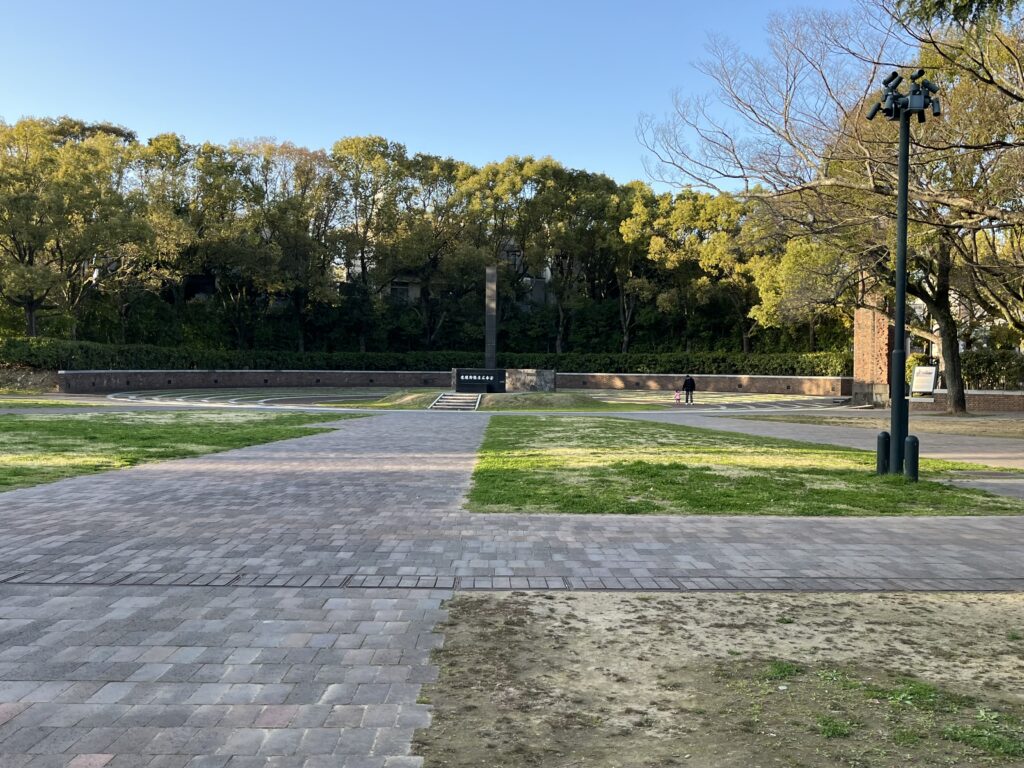
You cannot go to Nagasaki, and not visit the Atomic Bomb Museum. It might be the most heartwrenching and tragic museum you ever see, but it is essential to understand the suffering of the people of Nagasaki and the horrors of war in the nuclear age. The first thing you will see when entering the museum are the ruins of the Urakami church. The museum goes on to show the scene of the attack and destruction, the events leading to dropping the bomb, the reconstruction of Nagasaki, and the history of nuclear weapons. It ends with a message of hope for a world free of nuclear weapons.
Near the museum is the Hypocenter Park, with a monument showing where the bomb exploded and some ruins of the Urakami church entrance. Nearby is also the peace park in honor of world peace. The museum and both parks are accessible by tram. You can get off either at the Atomic Bomb museum stop or Peace Park stop on the blue line #1 or red line #3. From there it’s a short walk to the museum and parks.
Takashi Nagai Memorial Museum
- Open every day from 9:00 am to 5:00 pm
- Admission fee: 100 yen/person

We highly recommend you visit this small and inspirational museum on the life of the ‘Saint of Nagasaki’. Next door to the museum is the tiny hut he lived in until his death. Dr. Takashi Nagai was a catholic convert who survived the atomic explosion but lost his beloved wife to it. Although not yet canonized, he is a Servant of God and is likely to become Japan’s first modern saint. His story is one of incredible courage, faith, forgiveness and love. In the immediate aftermath of the atomic blast, he treated many bomb victims until his death in 1951. He wrote prolifically to secure donations for survivors and orphans. Dr. Nagai’s most famous book is: The Bells of Nagasaki.
One miraculous anecdote is that Dr. Takashi Nagai was friends with St. Maximilian Kolbe. He had X-rayed him before in the years that St. Maximilien was in Nagasaki. When Dr. Nagai was seriously wounded by the atomic bomb explosion, he was bed-ridden for a month nearly dying. He was given water taken from the Hongochi Lourdes grotto. When he drank it, he was inspired to pray to St. Maximilian Kolbe for the intercession of his healing. After drinking the water, he miraculously regained his strength and was healed. It was only later that he learned of St. Maximilien Kolbe’s death and martyrdom.
Quote from Dr. Takashi Nagai regarding the bombing of Nagasaki
On 23 November 1945, Dr Takashi Nagai spoke during a Requiem Mass celebrated beside the ruins of the Urakami Cathedral on how Christ’s sacrifice on the cross gave meaning to Nagasaki’s holocaust:
“On the morning of August 9th, an atomic bomb exploded above our district. In an instant, 8,000 Christians were called to God. At midnight that night, our cathedral suddenly caught fire and was consumed. At that very moment, at the imperial palace, His Majesty the emperor made known his decision. On August 15th, the imperial edict that put an end to the fighting was officially issued, and the whole world saw the light of peace. August 15th is also the great feast of the Assumption of Mary. It is not for nothing that the Urakami Cathedral was consecrated to Her. Is there not a deep connection between the annihilation of this Christian city and the end of the war? Was not Nagasaki the chosen victim, the spotless lamb, the holocaust offered on the altar of sacrifice, immolated for the sins of all the nations during the Second World War? Let us be grateful that Nagasaki was chosen for this holocaust! Let us be grateful, for through this sacrifice, peace has been given to the world, and religious freedom has been given to Japan”.
For more details on Takashi Nagai, you can read this article: https://www.patheos.com/blogs/yimcatholic/2013/04/the-conversion-of-takashi-nagai-and-his-vocation-of-love.html
Nakamachi Catholic Church
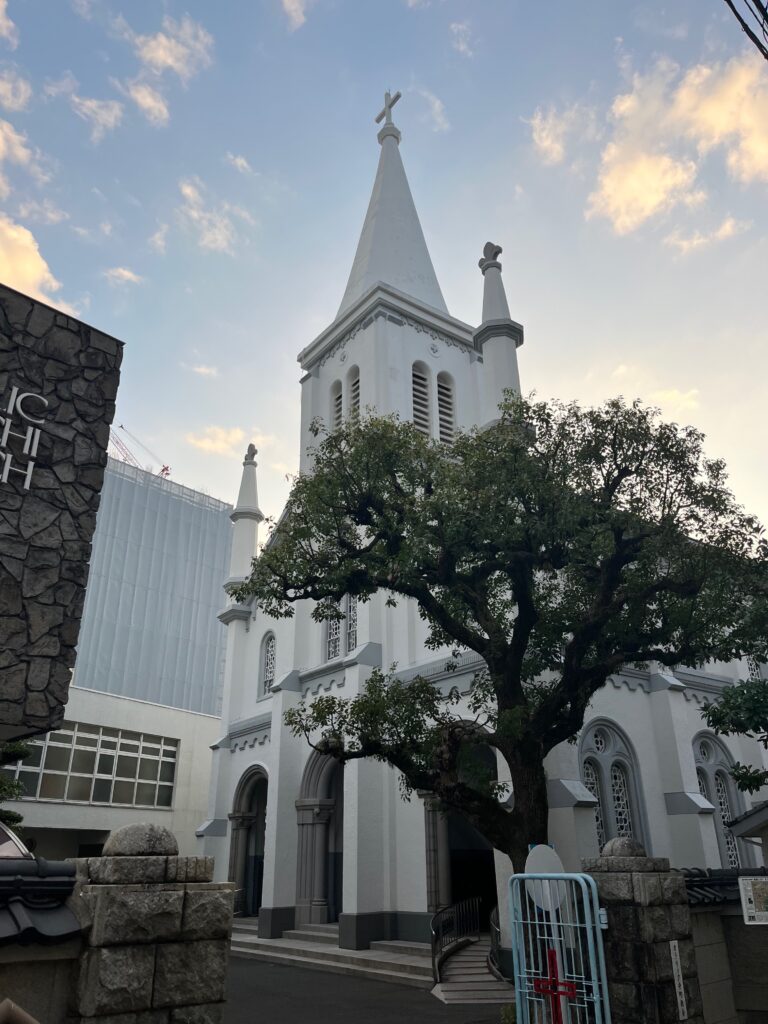
A beautiful church named for the 16 Martyrs of Nagasaki. It is within walking distance of the JR Nagasaki Station and Nishizaka hill. The original church was built at the end of the 19th century thanks to a wealthy French donor. Tragically destroyed by the atomic bomb, it was rebuilt in 1951. There is a little garden on the side of the church with statues of the 16 martyrs.
History of the 16 Martyrs of Nagasaki
These 16 martyrs were killed 40 years after the first group of 26 martyrs. In 1637, of the 50,000 Japanese Catholics who once lived In Nagasaki, all had been dispersed or killed by persecution. The latest group of missionaries (mostly Dominicans) heroically entered Japan in secret knowing full well the dangers they faced. They were discovered, arrested, and taken to Nagasaki to face atrocious tortures.
One of these torments included forcing large volumes of water down their throats, then long boards were placed on their stomachs and guards stepped on the ends of the boards, forcing the water to spurt violently from their mouthes, noses and ears. Another torture included inserting sharp bamboo needles under the fingernails of the martyrs.
They were ultimately put to death by tsurushi which involved being hanged upside down by the feet with their heads in nasty pits filled with excrements. One of the martyr’s hands was held tight with a rope, while the other would be left untied to signal the desire to renounce his faith. As if that was not unbearable enough, a cut was made in their temples on the side of the head to let their blood pressure decline. They would typically be left like this for two or three days before dying from suffocation or blood loss.
Near death, St. Lorenzo Ruiz’s last words were: “I am a Catholic and wholeheartedly do accept death for God; had I a thousand lives, all these to Him shall I offer”. His body was cremated and his ashes were thrown into the sea to prevent others from gathering his relics.
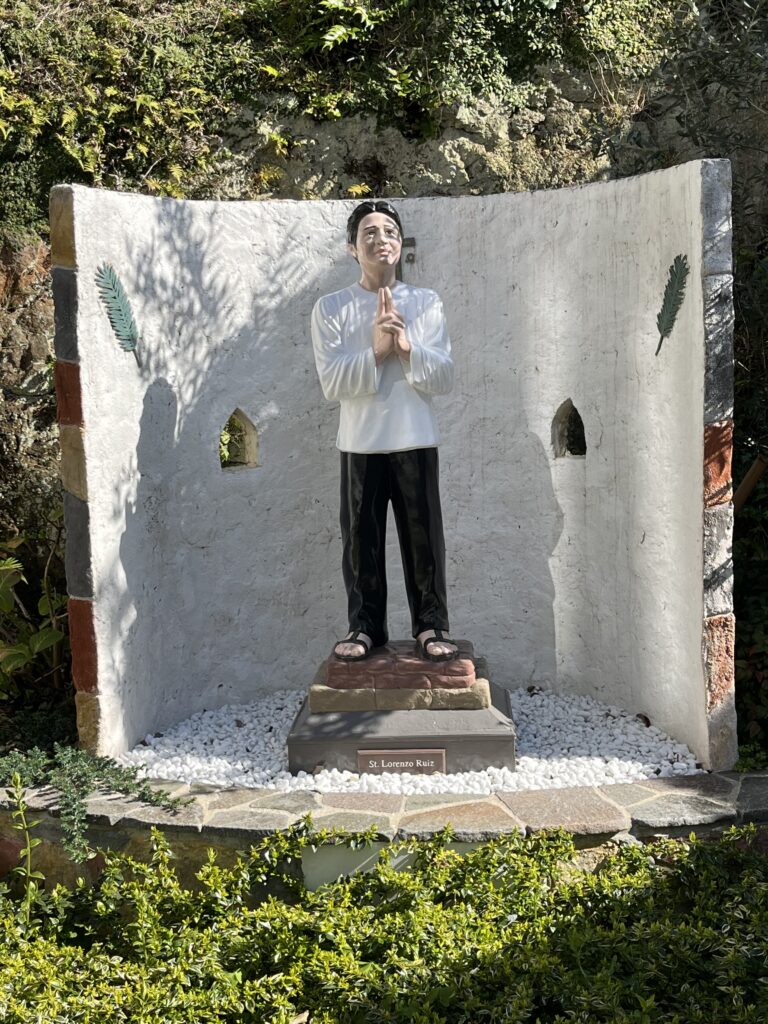
Noteworthy tourist sights
The city has plenty of non-religious sights worth a visit.
Nagasaki Ropeway
- Open from 09:00 am to 10:00 pm, with gondolas departing every 15–20 minutes
- Round-trip ticket: 1,250 yen/person
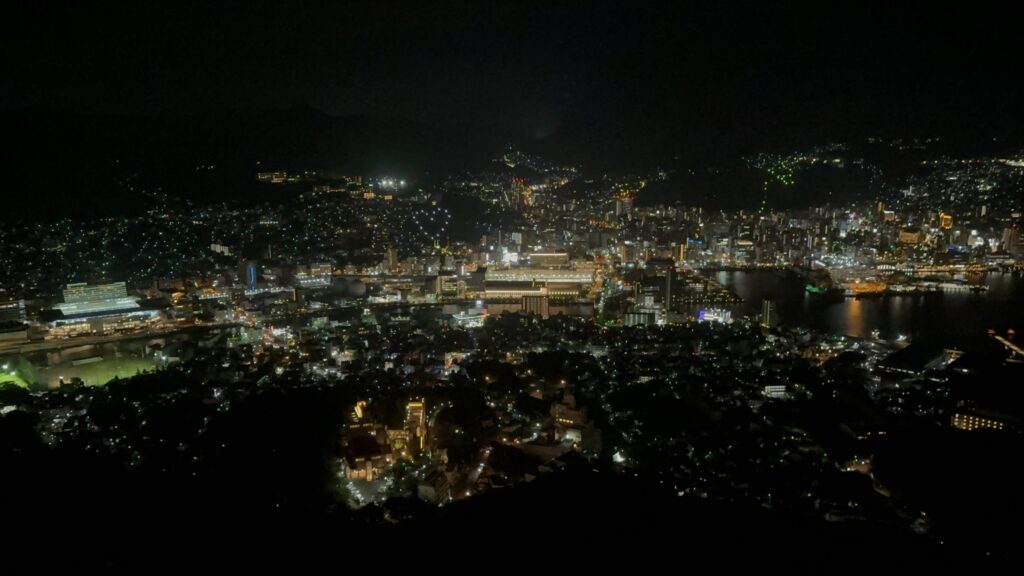
Nagasaki has one of the most beautiful night views in the World, comparable to the night views of Monaco and Hong Kong. To see it best, the Nagasaki Ropeway can take you to the top of Mount Inasa. Locals also like to go there to admire the sunset. It is about a 15 min walk from the JR Nagasaki Station.
Meganebashi or Spectacles bridge
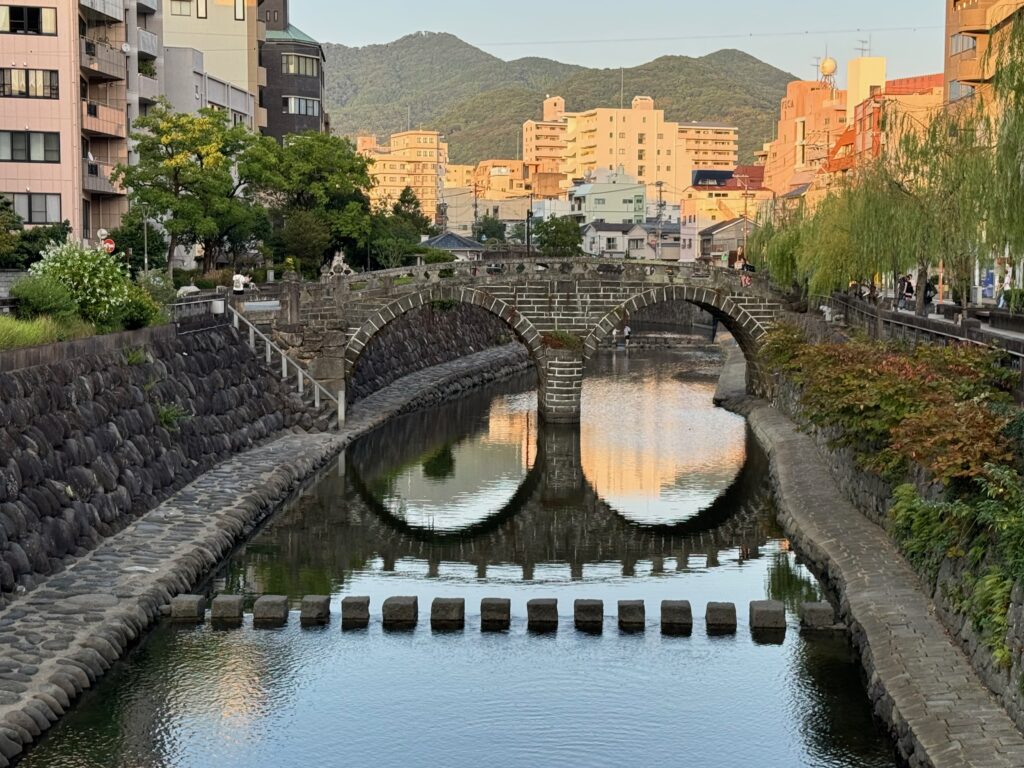
This cute bridge built in 1634, survived a couple of floodings and the atomic bomb. The reflection of the bridge in the river looks just like a pair of glasses, hence the Spectacles bridge name. The area and the stone walkway along the river make for a pleasant location to relax after walking around the city.
Dejima
- Open every day from 8:00 am to 9:00 pm
- Admission fee: 520 yen/person
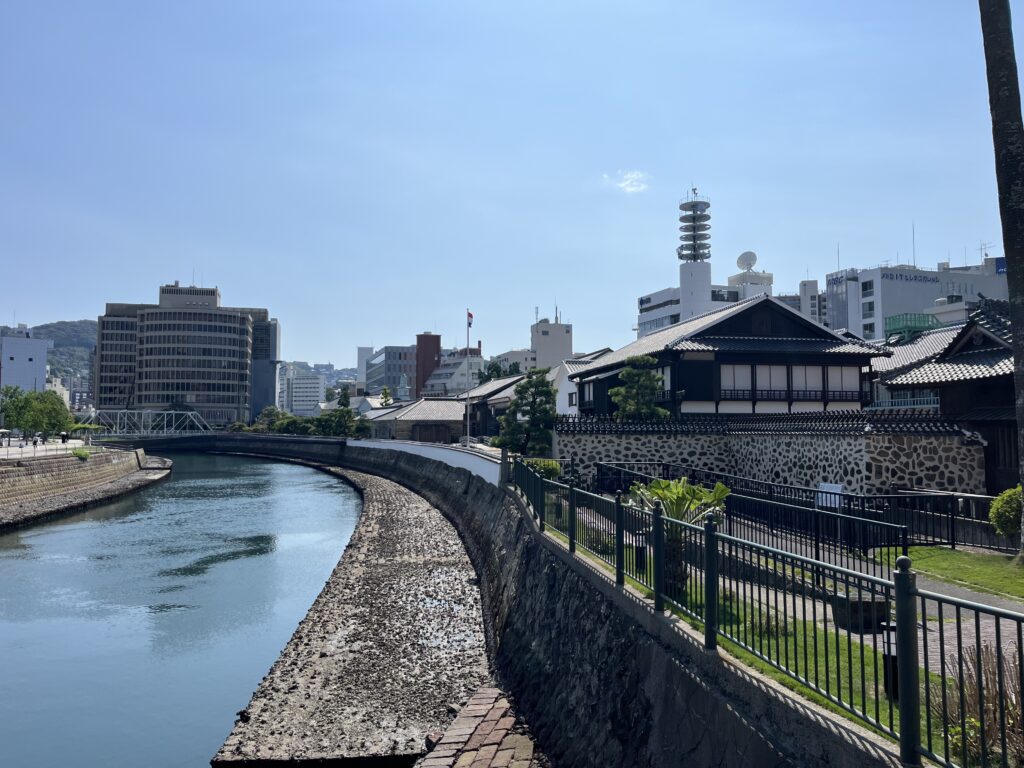
This artificial island served as a trading post for the Portuguese from 1570 to 1639, then for the Dutch from 1641 to 1858 when Catholicism was banned. It was the only part of Japan opened to Westerners during the 220-year isolationist Edo period. You can visit the museum and see the island the way it used to be with its residences, warehouses, gates and walls.
Nagasaki Chinatown
You can walk along the shops and restaurants lining the block of downtown Nagasaki that forms Japan’s oldest Chinatown. This is the place to come to try Champon noodles, one of Nagasaski’s specialties. It is not our favorite dish, but you have to try it at least once.
Dutch slope
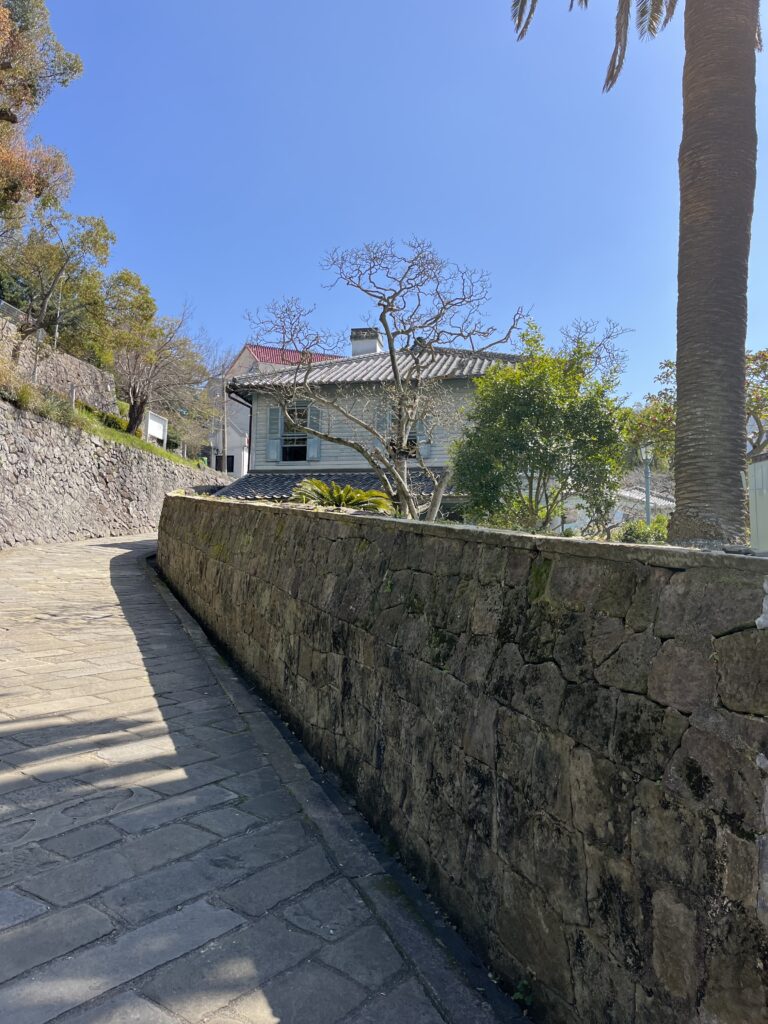
When Nagasaki’s harbor fully opened to foreign trade in 1859, many Westerners built their residences on this stone-paved street leading up a hill. For the previous two centuries, the locals equated all Westerners with the Dutch, as no other European nationalities were allowed to enter Japan. Thus this area got the name of Dutch Slope. You can walk around and admire the historical residences.
Where to go to Mass?
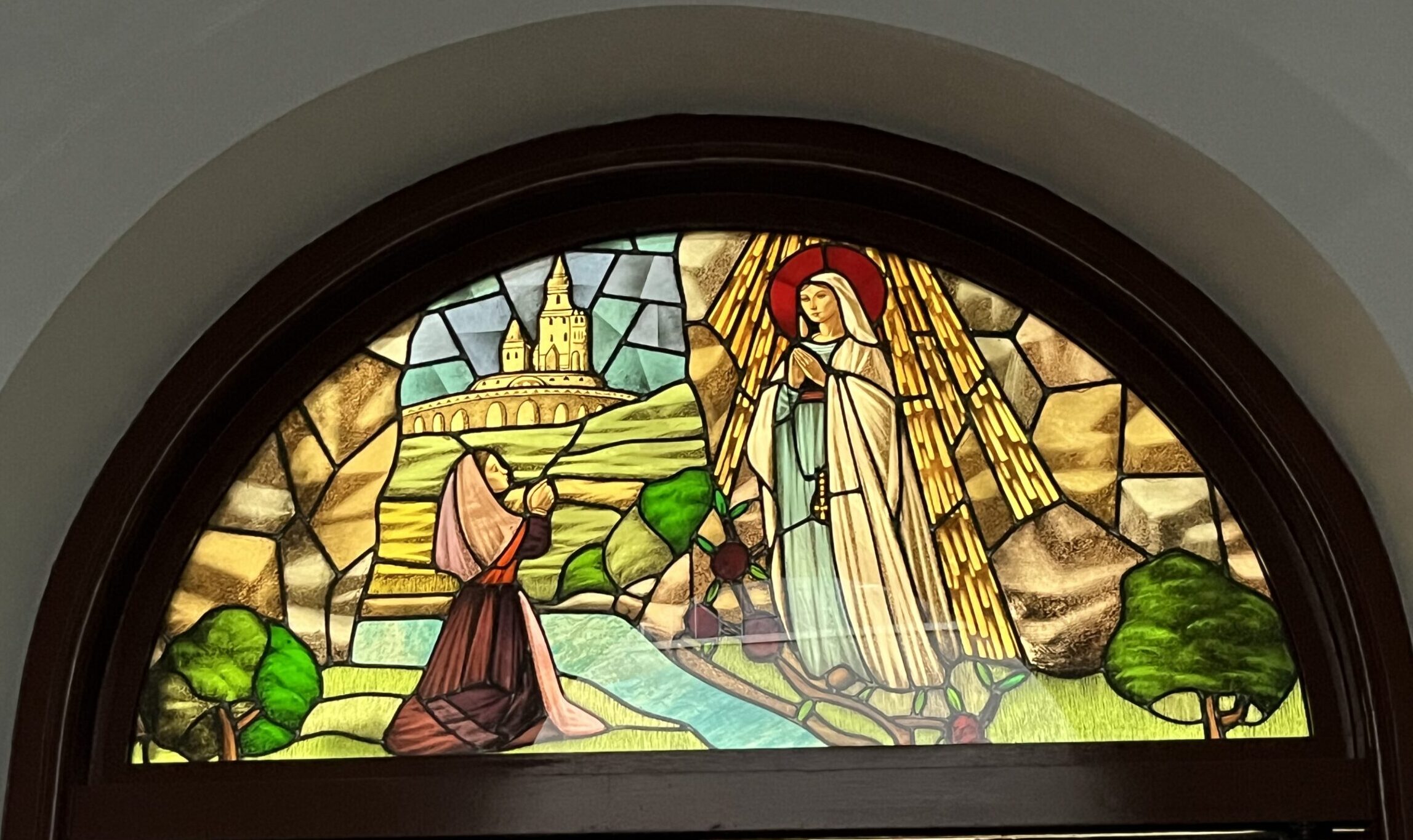
We noticed in Tokyo and Nagasaki that Japanese Novus Ordo Masses are generally more reverent than English Novus Ordo Masses. You may need to take your shoes off and there may not be a kneeler. Figuring out mass times online can be challenging, we ended up attending Mass in Japanese at the Urakami Cathedral, and in English at St. Philip church. Below are the Mass times from September 2024. There is also a church just below the historical Oura Church that has Masses available, but we did not see the times listed.
- Urakami Cathedral, Masses are in Japanese on:
- Saturday at 7:00 pm
- Sunday at 6:00 am, 7:30 am, 9:30 am, and 6:30 pm
- Monday to Friday at 6:00 am and 10:00 am
- Nakamachi Church, Masses are in Japanese:
- Monday to Wednesday at 6:30 a.m. (Japanese)Thursday at 7:00 pmSaturday at 06:30 am and 7:00 pm,
- Sunday at 06:30 am and 09:00 am
- St. Philip Nishizaka, Masses are offered by the Jesuits:
- Monday to Friday at 6:00 am (Japanese) and 6:00 pm (Japanese)
- Saturday at 6:00 am (Japanse)
- Sunday at 6:00 am (Japanese), 11:00 am (Japanese), 12:30 pm (English), and 6:00 pm (Japanese)
Another resource to help plan your Nagasaki pilgrimage
https://www.welcomekyushu.com/pamphlets/document/pamph_nagasaki03.pdf
